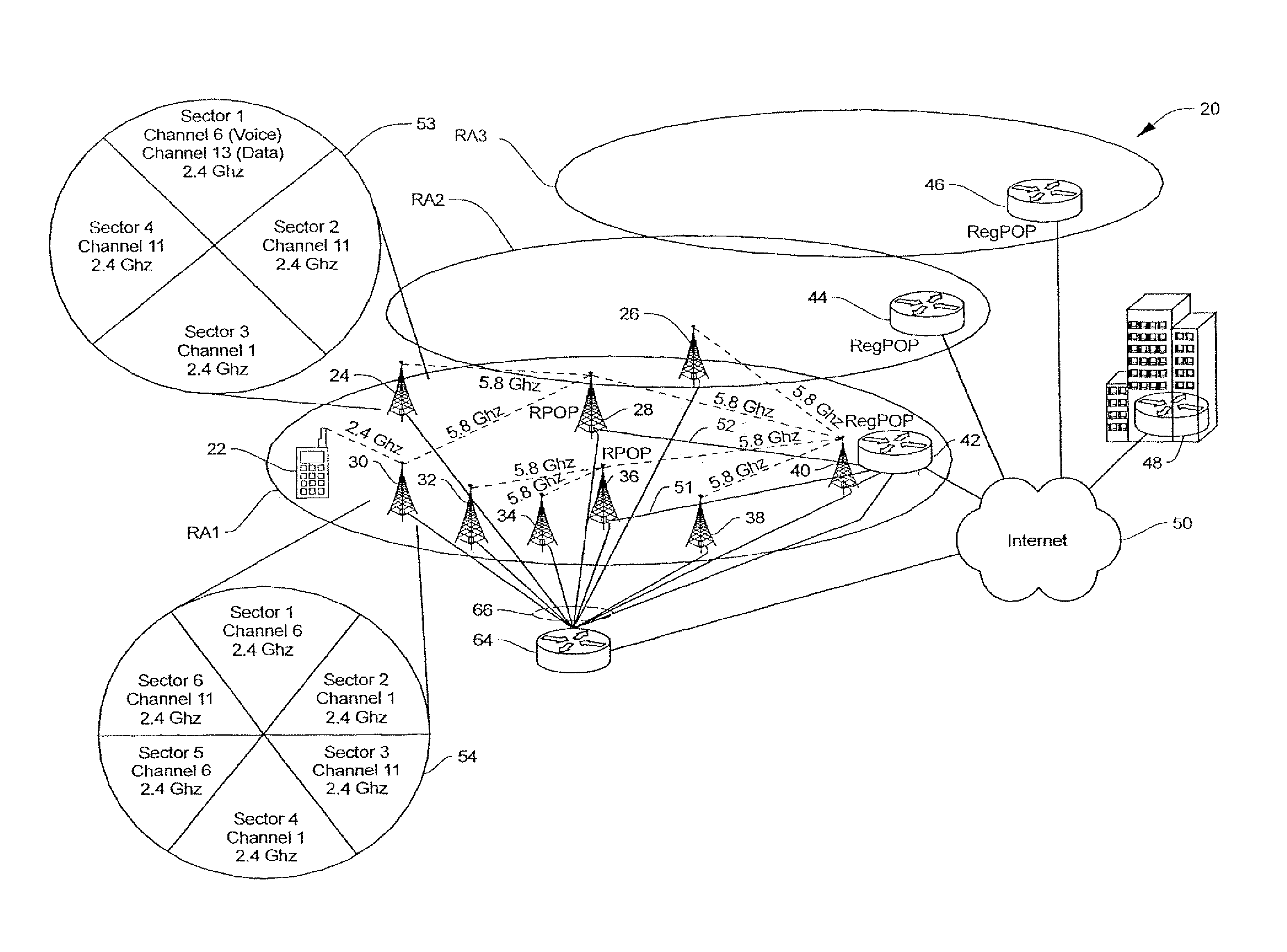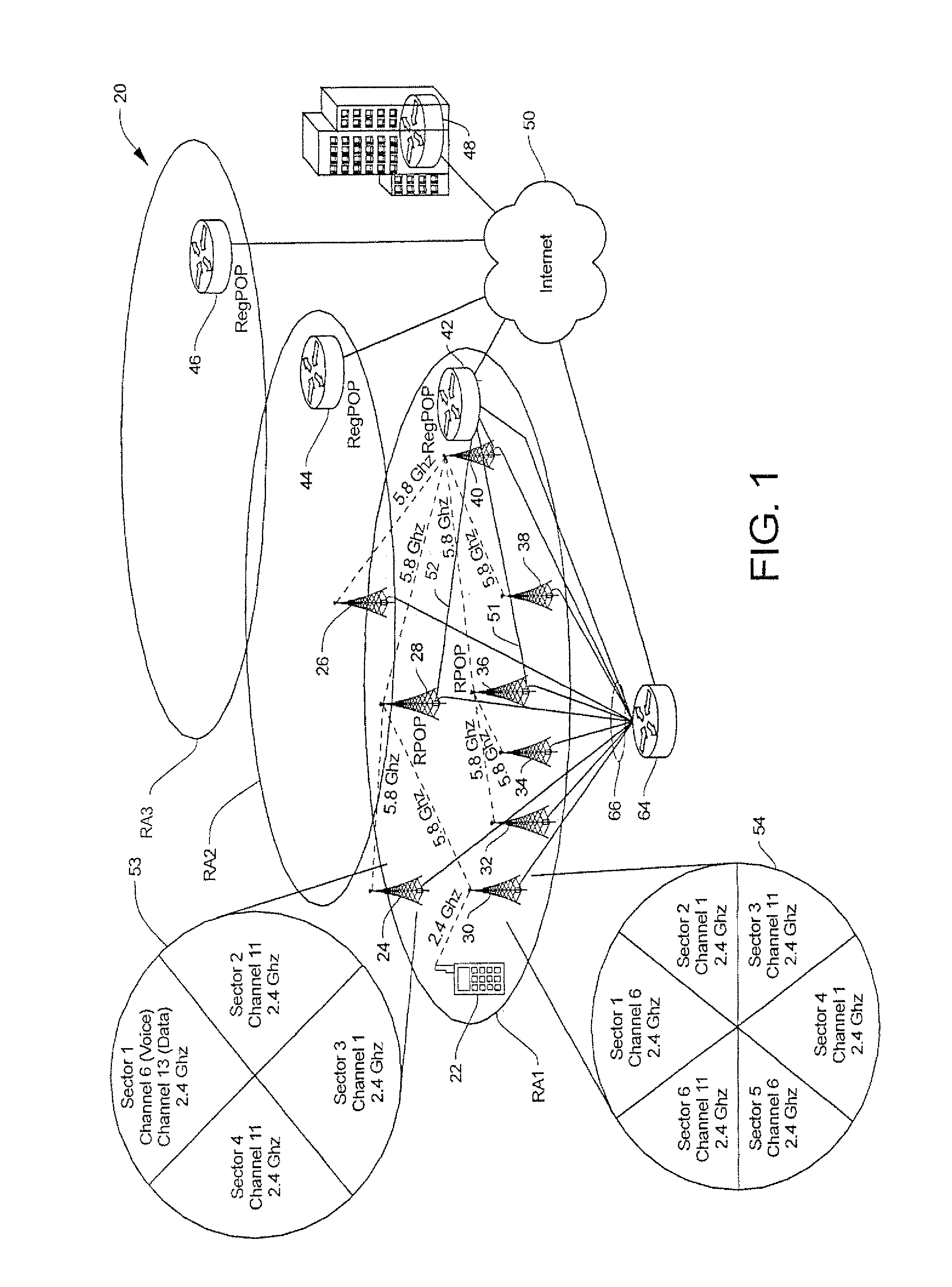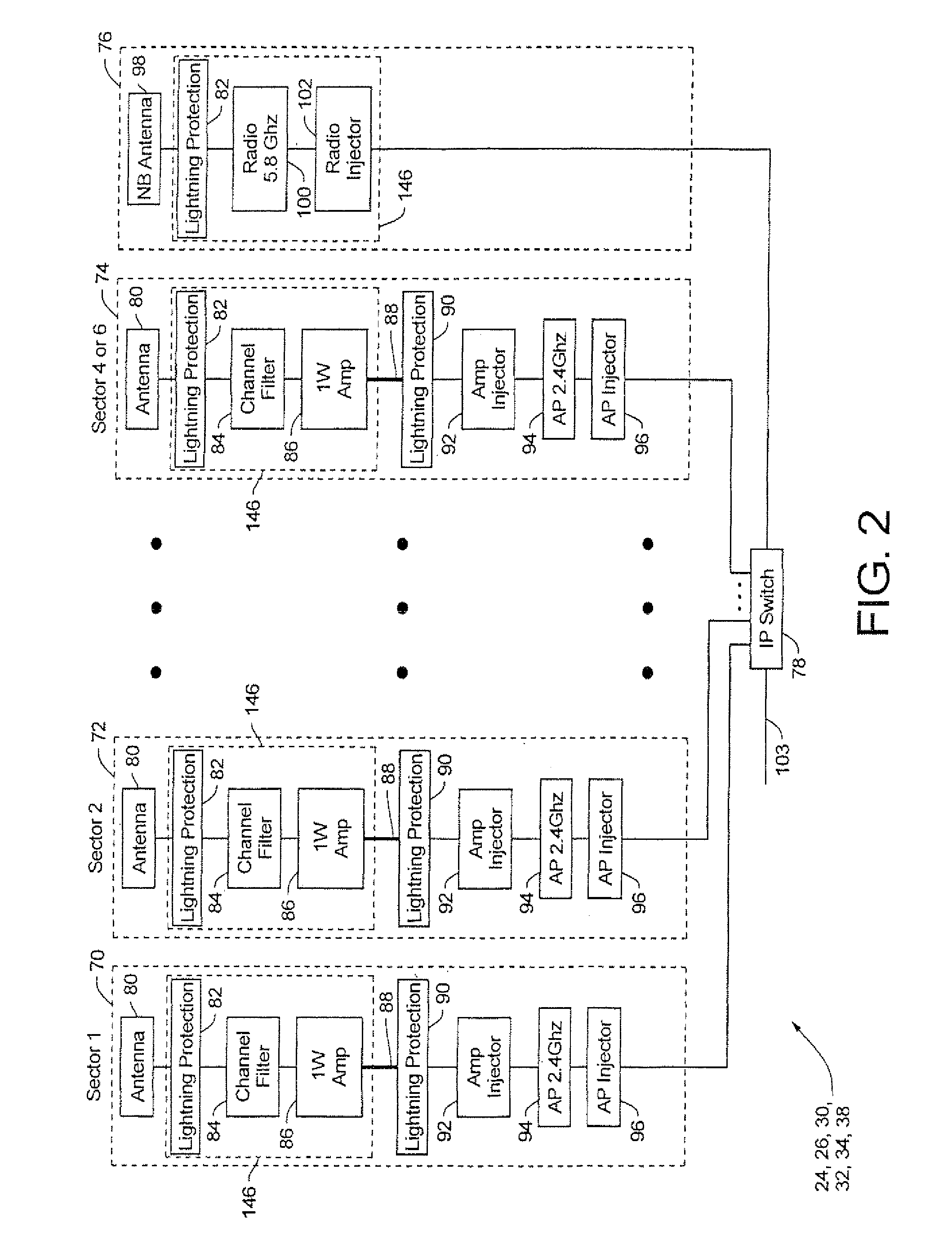Wireless packet communications system and method
a packet communication and wireless technology, applied in the field of wireless voice and data transmission systems, can solve the problems of more frequent battery charging or larger capacity (and heavier) batteries, more data processing, and increased battery power consumption
- Summary
- Abstract
- Description
- Claims
- Application Information
AI Technical Summary
Benefits of technology
Problems solved by technology
Method used
Image
Examples
Embodiment Construction
[0022]Turning now to the drawings, FIG. 1 is a conceptual diagram of a packet communications system 20 according to the present invention. The packet communications system 20 includes a Wireless-Fidelity (Wi-Fi) section that is shown in FIG. 1 as three regional areas (RAs) RA1, RA2, and RA3, and a mobile communication device 22. Each of the RAs has a plurality of base stations, however, for simplicity base stations are only illustrated in RA1. FIG. 1 shows seven base stations 24, 26, 28, 30, 32, 34, 36, 38 and 40 in RA1 which communicate with the mobile wireless communication device 22 at 2.4 GHz. It will be appreciated that the number of RAs can vary depending on the geographical area covered, and that the number of base stations in each RA can vary depending upon various factors including the size of the geographical area of the RA, the obstructions to RF communication within the RA, the anticipated number of simultaneous mobile wireless connections to each base station, and the c...
PUM
 Login to View More
Login to View More Abstract
Description
Claims
Application Information
 Login to View More
Login to View More - R&D
- Intellectual Property
- Life Sciences
- Materials
- Tech Scout
- Unparalleled Data Quality
- Higher Quality Content
- 60% Fewer Hallucinations
Browse by: Latest US Patents, China's latest patents, Technical Efficacy Thesaurus, Application Domain, Technology Topic, Popular Technical Reports.
© 2025 PatSnap. All rights reserved.Legal|Privacy policy|Modern Slavery Act Transparency Statement|Sitemap|About US| Contact US: help@patsnap.com



